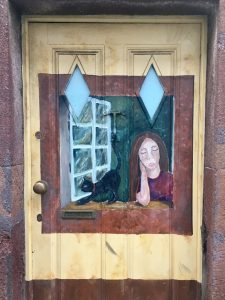
In the age of social media, it’s the image that rules. Instagram is the perfect example: It not only feeds some people’s insatiable need to document and offer glimpses into their private lives but also caters to a certain audience’s desire to consume and experience these slices of life vicariously. Instagram refers to the images posted as “stories,” a designation that fits in perfectly with the proverb: Every picture tells a story. And stories are almost always subject(ed) to interpretation. In the case of these Instagram picture stories, often the only clue is a brief caption or hashtag.
But what if the focus were to be shifted and that proverb were to be reversed? Read more








 In their 2016 book, Fintiaanien Mailla, three Finnish women take readers on a journey into unknown territory. Meeri Koutaniemi (photo journalist), Maria Seppälä (journalist and documentary filmmaker), and Katja Kettu (bestselling author) introduce us to Findians, a group of people who practically nobody has heard of, at least until now.
In their 2016 book, Fintiaanien Mailla, three Finnish women take readers on a journey into unknown territory. Meeri Koutaniemi (photo journalist), Maria Seppälä (journalist and documentary filmmaker), and Katja Kettu (bestselling author) introduce us to Findians, a group of people who practically nobody has heard of, at least until now.
 f course the title is facetious: I certainly don’t want to – even if I could, which I can’t – improve one of the best and most anthologized poems in the English language written by one of the greatest lyrical voices of all times. What I ‘do’ want to do, however, is write about a teaching tool that initially sends shivers up every student’s back: continuing a poem, using the same rhyme scheme and meter. Once they’ve mastered the task, however, they’re quite proud of themselves – and rightfully so.
f course the title is facetious: I certainly don’t want to – even if I could, which I can’t – improve one of the best and most anthologized poems in the English language written by one of the greatest lyrical voices of all times. What I ‘do’ want to do, however, is write about a teaching tool that initially sends shivers up every student’s back: continuing a poem, using the same rhyme scheme and meter. Once they’ve mastered the task, however, they’re quite proud of themselves – and rightfully so.